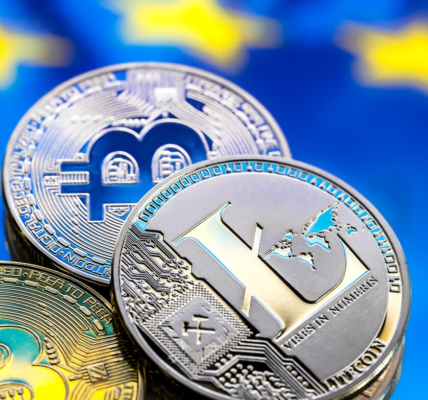Pi Network has been a topic of considerable buzz since its inception, offering a new form of digital currency that aims to be accessible to everyone. As more people join the network, one common question emerges: “When can I sell Pi coin?” This article delves deep into the current state of Pi coin, its market potential, and crucial information you need to know about selling this innovative cryptocurrency.
What is Pi Coin?
Pi coin is a digital currency from Pi Network, a new project plunging into the world of the crypto market. This is where Pi coin deviates from traditional cryptocurrencies like Bitcoin or Ethereum, specifically designed for computers to mine coins directly from the phone without draining much of its battery. Let us see in detail some of the key aspects of Pi coin:
What is Pi Coin?
Pi Coin is native to the Pi Network, and it leverages an innovative blockchain project that allows mobile-based mining. This basically means it’s far deviating from the traditional cryptos in a way that allows coin mining on a user’s smartphone without great damage to its battery power. One needs to really understand both the vision and technology to potentially understand what Pi Coin is capable of.
- User-friendly Mining: The mobile app of Pi Network allows users to mine Pi Coins directly from their phone over SCP (Stellar Consensus Protocol).
- More specifically, Pi Network sets out to democratize access to cryptocurrency through mining, which could be executed by anyone who owns a smartphone. This approach ideally fits their mission for the project: to promote financial inclusion and empowerment for all people around the world.
- Efficiency and Scalability: Pi Network reaches consensus via Federated Voting using SCP—an efficient and secure mining process with scalability. It is because of this technology that Pi Coin is different from the other cryptocurrencies and, therefore, a lot more usable for a common man.
Technology Behind Pi Coin
For its part, the essential tech behind Pi coin actually lies in the Stellar Consensus Protocol (SCP). In fact, it is one of the most efficient and scalable mechanisms for holding a consensus.
- Stellar Consensus Protocol: SCP has federated voting within its decentralized consensus. In other words, users can participate in the network using their phones and mine Pi Coins.
- Energy-Efficient Mining: SCP is energy efficient, unlike the relatively high energy consumption involved in proof-of-work (PoW) and proof-of-stake (PoS). XRP, therefore, permits mobile mining without the wiping out of the battery.
- Security and Decentralization: SCP provides a security and decentralization sense for Pi Network, which, in turn, provides an approach to make transactions transparent, immutable, and censor-resistant. This level of cryptographic security is paramount to continue building trust in the ecosystem.
Vision of Pi Coin
Pi Coin’s vision is to democratize access to cryptocurrencies by allowing an ecosystem for widespread adoption of blockchain technology.
- Financial Inclusion: By doing away with the entry barriers and allowing mobile-based mining, Pi Network aims to be a part of financial inclusion in an attempt to empower any person from any walk of life to take part in the digital economy.
- Accessibility: The mobile application of Pi Network includes a very accessible and simple user interface, through which even users with little experience in technical fields can be able to mine with great ease. This kind of accessibility is the crux for the coin to gain mainstream acceptance.
- Community Engagement: Community Engagement: Pi Coin holds community members at the highest value, ensuring active participation in a way that nurtures ownership and collaboration toward taking the project forward. This will be done through community-driven governance that strengthens decentralization and enhances the long-term sustainability of Pi Network.
Features of Pi Coin
Pi Coin does have a few unique features, which differentiate it from these traditional, run-of-the-mill cryptocurrencies.
- Mobile Mining: Pi Users mine right on their phones, hence allowing a larger population to take part in the mining.
- User-Friendly Interface: Through a Pi Network app, you get an easy and intuitive interface in your mining process for absolutely smooth user experience.
- Decentralized Governance: Community-driven governance enables users to take part in the development and decision-making process of the project, creating a more vibrant and inclusive ecosystem.
Trading Potential
Until now, Pi Coin has yet to be admitted into any major cryptocurrency exchange, and thus, trading potentials may remain purely speculative. Pi Coin may be affected by the following factors: market demand, level of adoption, and regulatory environment.
- Monitor the Pi Network: The ecosystem of Pi Network will continue to grow for the coming years, and therefore, an increase in their customer base will also be recorded. Pi Network may be monitored in the future by traders and investors for an opportunity where they can deploy funds.
- Market Dynamics: Thus, the factors influencing the trade potential of Pi Coin would be its utility, adoption, and competitive landscape prevalent in the cryptocurrency market.
- Long-term viability: Although the trading potential of Pi Coin remains uncertain, its technology and vision for mass adoption underscore its significance toward the future of decentralized finance.
The Current Status of Pi Coin Trading

As of the present moment, Pi coin remains in the Enclosed Network phase, indicating that it has not yet reached the open market for trading. This phase marks a crucial stage in the development and adoption of Pi coin, as it lays the groundwork for its eventual transition to a fully decentralized blockchain network.
Understanding the Enclosed Network Phase
During the Enclosed Network phase, Pi coin operates within a closed ecosystem, primarily accessible through the Pi Network app. This phase serves several purposes:
- Establishing the Foundation: The Enclosed Network phase allows the Pi Network team to fine-tune the coin’s infrastructure, test functionalities, and address any potential vulnerabilities before opening it up to a wider audience.
- Building the Community: It fosters the growth of the Pi Network community by incentivizing users to engage with the platform through activities such as mining, referring new members, and participating in the network’s governance.
- Securing the Network: By restricting trading to a closed environment, the network can better manage security measures, prevent fraudulent activities, and ensure the integrity of transactions.
Transitioning to Decentralization
The transition from the Enclosed Network phase to a fully decentralized blockchain is a significant milestone for Pi coin and its community. This phase involves several key steps:
- Mainnet Launch: The mainnet launch marks the transition from a centralized testing environment to a fully operational blockchain network. It entails the deployment of the Pi blockchain protocol, enabling peer-to-peer transactions and smart contract functionalities.
- Token Distribution: With the mainnet launch, Pi coin holders will receive their tokens on the native blockchain, facilitating trading and transfers outside the closed ecosystem.
- Open Market Trading: Once the Pi blockchain is live, Pi coin will be available for trading on various cryptocurrency exchanges, allowing users to buy, sell, and exchange Pi coins freely.
Implications for Potential Sellers
For individuals considering selling Pi coins, understanding its current status is crucial:
- Patience is Key: While Pi coin holds potential value, its trading availability is contingent upon the successful completion of the transition to decentralization. As such, potential sellers must exercise patience and monitor developments within the Pi Network ecosystem.
- Community Engagement: Active participation in the Pi Network community during the Enclosed Network phase can yield rewards in the form of increased coin holdings, referrals, and network benefits, ultimately enhancing the potential value of Pi coins upon their transition to the open market.
- Stay Informed: Keeping abreast of updates, announcements, and milestones set by the Pi Network team is essential for potential sellers to make informed decisions regarding their Pi coin holdings and trading strategies.
Anticipating the Market Release of Pi Coin
The question of when Pi coin holders can sell their coins is a common one within the Pi Network community. The answer hinges on the transition of Pi Network to its Open Network phase, a pivotal milestone that will enable Pi coins to be traded on exchanges. This phase represents the culmination of efforts toward full decentralization, a process closely monitored by both the community and developers.
Understanding the Transition to the Open Network Phase
The Open Network phase of Pi Network signifies the complete decentralization of the platform, allowing for the free trading of Pi coins on cryptocurrency exchanges. This transition involves several key components:
- Decentralization Protocol: The development and implementation of a robust decentralization protocol are essential for transitioning from a closed ecosystem to an open network. This protocol ensures the security, integrity, and autonomy of transactions within the Pi blockchain.
- Mainnet Deployment: The deployment of the mainnet represents the official launch of the Pi blockchain, where Pi coins exist as native tokens on a fully operational blockchain network. This deployment is a critical step toward enabling trading on external exchanges.
- Exchange Integration: Integration with cryptocurrency exchanges is necessary to facilitate the buying, selling, and trading of Pi coins against other cryptocurrencies or fiat currencies. Collaboration with exchange platforms ensures liquidity and accessibility for Pi coin holders.
Monitoring the Transition Timeline
The transition timeline from the Enclosed Network phase to the Open Network phase is closely monitored by the Pi Network community and developers. Several factors influence this timeline:
- Development Milestones: Progress in key development milestones, such as protocol upgrades, security enhancements, and scalability improvements, impacts the timing of the transition. Delays or advancements in these areas can affect the overall timeline.
- Community Engagement: The engagement and participation of the Pi Network community play a vital role in expediting the transition process. Active involvement in testing, feedback, and community initiatives contribute to the network’s growth and readiness for decentralization.
- Regulatory Considerations: Compliance with regulatory requirements and legal frameworks governing cryptocurrency trading and exchange listing may influence the timing of the transition. Adhering to regulatory standards ensures a smooth and lawful transition to the Open Network phase.
Stay Informed and Prepared
For Pi coin holders anticipating the market release of Pi coin, staying informed and prepared is essential. This involves:
- Following Official Channels: Regularly checking official Pi Network channels, including announcements, blog posts, and social media updates, provides insights into the progress of the transition and any related developments.
- Community Engagement: Engaging with the Pi Network community through forums, discussions, and events fosters collaboration, knowledge-sharing, and support among members. It also offers opportunities to contribute to the network’s growth and success.
- Risk Management: Understanding the risks associated with cryptocurrency trading, including market volatility, liquidity concerns, and regulatory uncertainties, allows Pi coin holders to make informed decisions and mitigate potential losses.
How to Prepare for Selling Pi Coin

As the opportunity to sell Pi coin approaches, adequate preparation is key to maximizing potential returns and navigating the cryptocurrency market effectively. Here are essential steps to ensure readiness for selling Pi coin:
Stay Informed
Staying abreast of official Pi Network announcements is crucial for understanding the latest developments and updates regarding the transition to the Open Network phase and the subsequent market release of Pi coin. This can be achieved through various channels, including:
- Official Website: Regularly visit the Pi Network website to access official announcements, blog posts, and updates from the development team.
- Social Media: Follow Pi Network’s official social media accounts on platforms like Twitter, Facebook, and LinkedIn for real-time updates and community engagement.
- Community Forums: Participate in Pi Network community forums, such as Reddit or Discord, where members share insights, discuss developments, and provide support to one another.
Secure Your Wallet
Ensuring the security and accessibility of your Pi wallet is paramount before embarking on selling Pi coin. Take the following precautions to safeguard your wallet:
- Backup Your Private Keys: Create backups of your Pi wallet’s private keys and store them securely offline to prevent unauthorized access or loss of funds.
- Enable Two-Factor Authentication (2FA): Strengthen the security of your Pi wallet by enabling two-factor authentication, adding an extra layer of protection against unauthorized access.
- Update Wallet Software: Regularly update your Pi wallet software to the latest version to benefit from security patches and bug fixes provided by the development team.
Understand Market Basics
Familiarizing yourself with cryptocurrency exchanges and trading principles is essential for making informed decisions when selling Pi coin. Here are key aspects to consider:
- Research Exchanges: Explore different cryptocurrency exchanges where Pi coin is likely to be listed for trading. Evaluate factors such as trading fees, liquidity, security measures, and user experience to choose a suitable platform.
- Learn Trading Strategies: Acquaint yourself with basic trading strategies, such as market orders, limit orders, and stop-loss orders, to execute trades effectively and mitigate risks.
- Monitor Market Trends: Keep an eye on cryptocurrency market trends, including price movements, trading volumes, and market sentiment, to identify potential selling opportunities and make informed decisions.
Potential Platforms for Selling Pi Coin
When Pi coin transitions to a tradable asset, it is expected to be listed on several cryptocurrency exchanges, providing holders with options for selling, trading, and exchanging their Pi coins. Here are some potential platforms where Pi coin might be available:
Binance
Binance is one of the largest and most popular cryptocurrency exchanges globally, known for its extensive range of trading pairs, high liquidity, and user-friendly interface. Key features of Binance include:
- Wide Selection of Coins: Binance offers a vast array of cryptocurrencies for trading, making it a likely candidate for listing Pi coin once it becomes tradable.
- High Liquidity: With its large user base and high trading volumes, Binance provides ample liquidity for traders, ensuring smooth execution of trades and competitive pricing.
- Security Measures: Binance prioritizes security and employs advanced security protocols to safeguard user funds and data.
Coinbase
Coinbase is a popular cryptocurrency exchange based in the United States, known for its user-friendly interface, regulatory compliance, and accessibility to beginners. Considerations for Coinbase include:
- Regulatory Compliance: Coinbase adheres to regulatory standards in the jurisdictions where it operates, making it a trusted platform for users seeking a compliant trading environment.
- Fiat Support: Coinbase supports fiat currency deposits and withdrawals, allowing users to easily convert Pi coins into traditional currencies.
- Educational Resources: Coinbase provides educational resources and guides for users new to cryptocurrency trading, fostering a supportive environment for beginners.
Kraken
Kraken is a well-established cryptocurrency exchange known for its robust security measures, diverse trading options, and global presence. Key features of Kraken include:
- Security Protocols: Kraken implements advanced security measures, including cold storage, two-factor authentication, and encryption, to protect user assets.
- Global Availability: Kraken serves users from around the world, offering support for multiple fiat currencies and languages, which may enhance accessibility for Pi coin holders globally.
- Trading Options: Kraken provides various trading options, including spot trading, margin trading, and futures trading, catering to traders with different preferences and risk profiles.
Maximizing Your Returns When Selling Pi Coin

When it comes to selling Pi coin, implementing effective strategies can help you maximize your returns and optimize your selling experience. Here are key strategies to consider:
Timing Your Sale
Timing is crucial when selling Pi coin to capitalize on market trends and maximize returns. Consider the following factors:
- Market Analysis: Conduct thorough market analysis to identify favorable selling opportunities. Monitor price movements, trading volumes, and market sentiment to gauge the market’s direction and momentum.
- Price Targets: Set realistic price targets based on your investment goals and risk tolerance. Consider factors such as historical price data, support and resistance levels, and external market factors that may influence Pi coin’s price.
- Utilize Technical Analysis: Employ technical analysis techniques, such as chart patterns, indicators, and trend analysis, to identify optimal entry and exit points for selling Pi coin.
Using the Right Exchange
Choosing the right cryptocurrency exchange can significantly impact your returns when selling Pi coin. Consider the following factors when selecting an exchange:
- Trading Fees: Compare trading fees across different exchanges and choose a platform with competitive fee structures. Lower trading fees can help maximize your returns by reducing transaction costs.
- Liquidity: Opt for exchanges with high liquidity to ensure efficient order execution and minimal slippage when selling Pi coin. Higher liquidity translates to tighter bid-ask spreads and better price discovery.
- Security Features: Prioritize exchanges with robust security measures, such as cold storage, two-factor authentication (2FA), and insurance coverage for digital assets. Security breaches can result in loss of funds and negatively impact your returns.
- User Experience: Consider the user interface, trading tools, and customer support provided by exchanges. A user-friendly platform with intuitive features can enhance your selling experience and enable swift decision-making.
Diversification and Risk Management
Diversifying your selling strategy and implementing risk management techniques can help safeguard your investment and optimize returns:
- Portfolio Diversification: Consider diversifying your investment portfolio across multiple cryptocurrencies or asset classes to mitigate risk and capture opportunities in different market conditions.
- Stop-Loss Orders: Implement stop-loss orders to automatically sell Pi coin at predetermined price levels to limit potential losses in the event of adverse price movements.
- Profit Taking: Consider taking profits periodically by selling a portion of your Pi coin holdings when price targets are met or market conditions warrant. This allows you to lock in profits and reduce exposure to market volatility.
Risks Involved in Selling Pi Coin
Selling Pi coin entails inherent risks that investors should be aware of to make informed decisions and mitigate potential losses. Here are some key risks associated with selling Pi coin:
Market Volatility
Cryptocurrency markets are known for their volatility, characterized by rapid and unpredictable price fluctuations. Factors contributing to market volatility include:
- Market Sentiment: Cryptocurrency prices are heavily influenced by investor sentiment, market speculation, and news events. Positive or negative sentiment can trigger significant price swings in short periods.
- Lack of Regulation: The absence of centralized regulation and oversight in the cryptocurrency market contributes to heightened volatility. Price movements may be driven by speculative trading, market manipulation, or sudden shifts in supply and demand dynamics.
- External Factors: Cryptocurrency prices can be influenced by external factors such as macroeconomic indicators, geopolitical events, and technological advancements. Changes in global economic conditions or regulatory developments in other industries may impact cryptocurrency prices.
Regulatory Changes
Regulatory uncertainty poses a significant risk to investors selling Pi coin, as regulatory changes can affect the legality, profitability, and operational aspects of cryptocurrency transactions. Considerations include:
- Legal Status: Cryptocurrency regulations vary by jurisdiction, and new laws or regulations may impact the legality of selling Pi coin in certain regions. Changes in regulatory frameworks can introduce compliance requirements, licensing obligations, or restrictions on cryptocurrency transactions.
- Taxation: Tax laws governing cryptocurrency transactions, including selling Pi coin, may be subject to changes or interpretations by tax authorities. Failure to comply with tax obligations can result in penalties, fines, or legal consequences for investors.
- Compliance Risks: Regulatory compliance risks arise from non-compliance with anti-money laundering (AML) and know-your-customer (KYC) regulations when selling Pi coin on cryptocurrency exchanges. Exchanges may impose restrictions or suspend trading activities to comply with regulatory requirements, impacting liquidity and market access.
Conclusion
As Pi Network continues to evolve, the anticipation around trading Pi coin grows. Staying informed and prepared is the best strategy for anyone looking to take advantage of this emerging opportunity in the world of cryptocurrency.
FAQ
A: You can sell Pi coin once it’s officially listed on cryptocurrency exchanges, which will happen after the network moves to the Open Network phase.
A: Yes, you will need a Pi wallet, which is provided through the Pi Network app.
A: Tax regulations vary by country, but profits from cryptocurrency trading are typically subject to capital gains tax.








